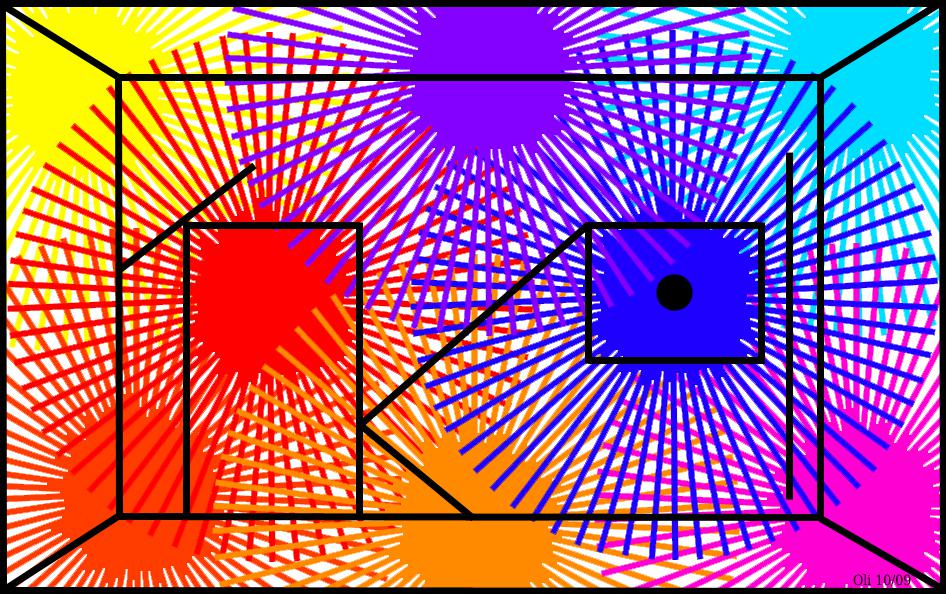Golfing Excellence: Unveiling the Mental Edge of Swing Deconstruction
Golf, a sport that demands precision and coordination, centers around the intricate golf swing. Exploring swing deconstruction through slow-motion practice reveals cognitive benefits essential for optimizing performance.
Delving into the cognitive intricacies of swing deconstruction, this piece unravels the mental advantages it offers golfers. By dissecting movements and slowing down the swing tempo, players can gain profound insights into body mechanics, club placement, and ball impact. This heightened awareness enhances motor control and sensory responsiveness, paving the way for precise execution.
Slow-motion practice serves as a gateway to kinesthetic learning. By consciously experiencing muscle contractions and sequencing movements with precision, golfers cultivate a profound understanding of their physical actions. This heightened kinesthetic intelligence translates into enhanced control and consistency in their full-speed swings.
The key lies in maintaining focused attention and engaging in analytical thinking during swing deconstruction. Breaking down the swing into its constituent parts enables golfers to pinpoint areas for enhancement and apply tailored adjustments. This systematic process promotes a methodical approach to refining the swing, resulting in more effective and optimized performance on the course.
Enhancing Precision and Control: Empowering Golfers for Flawless Execution
Through honing kinesthetic awareness and breaking down the swing into its fundamental components, slow-motion practice sharpens motor control. The precision stems from a deep comprehension of body mechanics and coordination fostered by this practice. By isolating movements and performing deliberate actions, golfers establish a refined neuromuscular connection, enabling controlled and efficient full-speed swings.
Moreover, the focused attention and analytical mindset inherent in swing deconstruction empower players to identify areas for improvement and implement precise adjustments. Armed with a comprehensive understanding of the swing sequence, they can detect technical flaws and employ targeted strategies to rectify them. This meticulous approach leads to optimized performance, as golfers can fine-tune their swings while maintaining consistent play.
Fueling Kinesthetic Intelligence: Elevating Sensory Awareness for Impeccable Movements
Engaging in swing deconstruction via slow-motion practice offers a unique opportunity to nurture kinesthetic intelligence, the ability to sense and regulate body movements accurately. Through intentional muscle contractions and deliberate sequences, golfers gain a deep insight into their physical mechanics. This heightened kinesthetic awareness translates into refined coordination, enabling players to execute smooth and precise movements effortlessly.
Embracing Precision-Oriented Practice: Building the Foundation for Unwavering Consistency
Slow-motion practice provides a controlled environment where golfers can focus on the sensory feedback their bodies convey. This meticulous and analytical approach enables them to identify and rectify inconsistencies in their swings. By fine-tuning individual components, golfers establish a robust foundation of consistent movement patterns. This foundational stability minimizes variability, eliminates energy-wasting compensations, and ultimately results in accurate and reliable shot execution.
Focused Attention: Empowering Players with an Analytical Approach for Effective Swing Refinement
Slow-motion swing practice not only heightens awareness and kinesthetic intelligence but also cultivates an analytical thinking process and focused attention. Here are the primary benefits:
Cognitively Dissecting the Swing: Breaking down the swing into smaller components allows players to meticulously examine each movement, identifying areas for mechanical enhancement. This analytical approach enables precise adjustments, resulting in a more optimized and repeatable swing.
Tuning into Body Mechanics: Concentrated attention during slow-motion practice guarantees that golfers are acutely aware of their body mechanics. They can keenly observe the sequencing of motions, club positioning, and impact dynamics. This heightened awareness fosters greater control and consistency, leading to enhanced ball striking and shot accuracy.
Identifying and Correcting Errors: With enhanced analytical thinking, golfers can proactively spot inefficiencies or errors in their swing. By slowing down the tempo, they have ample time to analyze the cause and effect relationships between body movements and ball trajectory. This facilitates immediate error correction, reduces the potential for developing bad habits, and fosters a faster learning curve.
Cognitive Optimization: Unleashing Golf Performance Potential through Slow-Motion Practice
Embracing slow-motion swing practice unveils a plethora of cognitive advantages that elevate golf performance. By dissecting the swing and isolating movements, golfers attain an unparalleled level of insight into their body mechanics and club dynamics. This refined understanding empowers them to identify areas for improvement and implement targeted adjustments, optimizing their swing technique for enhanced precision and consistency.
Slow-motion practice nurtures heightened kinesthetic awareness, fostering a deep connection with body movements and muscle contractions. This refined sensory feedback becomes invaluable during full-speed swings, where enhanced coordination and control lead to improved ball impact and reduced variability. The kinesthetic knowledge acquired through slow-motion practice serves as the cornerstone for consistent and repeatable golf swings.
Furthermore, slow-motion practice encourages analytical thinking and focused attention, promoting a systematic approach to swing development. By deconstructing the swing into smaller components, golfers can identify weaknesses and apply specific drills or adjustments to address them. This structured approach deepens the understanding of swing dynamics and facilitates a more efficient learning process, ultimately driving long-term performance enhancements.
In Conclusion
Implementing slow-motion swing practice in golf training presents a transformative method for enhancing cognitive function and optimizing performance. This innovative technique empowers golfers to delve into the intricacies of their swing, fostering deeper analytical and kinesthetic understanding. Through the deconstruction of movements, players can identify areas for improvement, refine their technique, and heighten body awareness. Ultimately, swing deconstruction revolutionizes golf training by empowering individuals to transcend technical barriers and unleash their full potential on the course.

Title: Enhanced Cognitive Function in Golf: The Mental Benefits of Slow-Motion Swing Practice
Introduction:
In the world of golf, where precision and strategy reign supreme, cognitive acuity plays a pivotal role in mastering the game. Swing deconstruction, a mental exercise involving deliberate slow-motion analysis, serves as a catalyst for enhancing cognitive function among golfers. This article delves into the mental benefits of slow-motion swing practice, shedding light on how it enhances motor control, kinesthetic awareness, and focused attention, ultimately leading to improved performance on the golf course.
Benefits of Slow-Motion Swing Practice:
Slow-motion swing practice goes beyond physical movements; it enriches the cognitive aspects of golf, offering players a unique opportunity to deepen their understanding of the game. Here are the key benefits of embracing slow-motion swing practice:
-
Enhanced Body Mechanics Understanding:
By meticulously breaking down the golf swing into its components, players gain profound insights into body mechanics, club positioning, and ball impact. This heightened awareness empowers golfers to plan and execute shots with precision and accuracy.
-
Kinesthetic Learning Experience:
Engaging in slow-motion practice fosters a kinesthetic learning experience where players intentionally focus on feeling muscle contractions and sequencing movements. This heightened kinesthetic intelligence allows golfers to refine their swing mechanics with consistency and finesse.
-
Sharpened Analytical Skills:
The analytical nature of swing deconstruction sharpens players’ attention and decision-making abilities. Identifying areas for improvement enables golfers to adopt a strategic approach to optimizing their swings, resulting in enhanced performance and minimized errors.
Practical Tips for Optimal Slow-Motion Practice:
To make the most of slow-motion swing practice, consider the following practical tips:
-
Focus on one aspect at a time: Break down your swing into distinct components and give each element dedicated attention during practice sessions.
-
Utilize video analysis tools: Record your slow-motion swings and use video analysis tools to identify subtle movements and areas for improvement.
-
Engage in mental rehearsal: Visualize your swing in slow-motion before executing it physically to reinforce muscle memory and enhance cognitive engagement.
Case Studies: Real-Life Success Stories:
Explore real-life case studies of golfers who have embraced slow-motion swing practice and reaped the benefits of enhanced cognitive function on the golf course. Learn from their experiences and gain insights into how deliberate mental practice can elevate your game.
Conclusion:
the mental benefits of slow-motion swing practice in golf are undeniable. By enhancing cognitive function through focused attention, kinesthetic learning, and analytical skills refinement, players can elevate their performance and enjoyment of the game. Embrace the power of deliberate practice, and unlock a new level of mental acuity and precision in your golf game.
Remember, practice makes perfect, and slow-motion swing practice is the key to unlocking your full potential on the golf course. Elevate your game, enhance your cognitive function, and enjoy the journey towards golfing excellence through the art of swing deconstruction.




